Slavery in South Dakota
The Dakota Territory, constituted in 1861 amidst the convulsions of sectional conflict, exemplifies the complex intersections between federal emancipation policies, frontier settlement, and the indirect yet consequential legacies of slavery. To understand South Dakota’s place within this history requires a careful examination of the territorial economy, migration patterns, institutional endowments, and the lived experiences of African Americans who, despite small numbers, forged communities and resistance within a predominantly white settler context.
The earliest direct connection to slavery in the region that would become South Dakota is embodied in the figure of York, an enslaved man owned by William Clark who participated in the Lewis and Clark Expedition from 1804 to 1806. York’s presence on the Upper Missouri River, including lands now encompassed by South Dakota, underscores the mobility of enslaved individuals in early American exploration and expansion. York’s labor, intelligence, and engagement with Indigenous communities were instrumental to the expedition’s success, demonstrating how the institution of slavery extended beyond the plantation and into the very mapping of the continental interior.
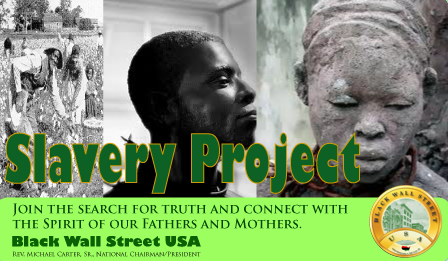
In this sense, the early Dakota landscape was imprinted with the presence of enslaved labor, even as statutory codes prohibited the establishment of formal plantations. York’s role also prefigures the subtle entanglements between military, exploration, and labor networks that would later facilitate the settlement and economic development of the territory, revealing the ways in which slavery’s imprint transcended direct ownership and was embedded in logistical and human capital.
Legally, Dakota Territory was situated within a national framework increasingly attentive to the sectional conflict over slavery. While the Missouri Compromise of 1820 excluded slavery from lands north of the latitude line in adjacent regions, the repeal of the Compromise and the passage of the Kansas–Nebraska Act of 1854 introduced uncertainty regarding the status of African Americans in the northern Plains. The enactment of federal statutes in 1862, following the outbreak of the Civil War, abolished slavery within all federal territories, including Dakota.
Consequently, although the territory formally prohibited chattel bondage, the underlying economic and social structures remained profoundly shaped by the legacy of slavery elsewhere. Capital flows originating from slave economies in the South financed railroads, banks, and settlement enterprises that extended into Dakota Territory, thereby linking the ostensibly “free” prairie frontier to the profits derived from enslaved labor. This indirect economic connection demonstrates that abolition, while transforming the legal status of African Americans, did not erase the systemic and material influence of slavery on the development of new states and territories.
The territorial economy of Dakota was further structured by federal land policies and infrastructure projects, particularly the Homestead Act of 1862 and the construction of transcontinental railroads. These initiatives were not neutral economic mechanisms; they operated within a national context in which wealth, credit, and investment had been extensively generated through the labor of enslaved people. Railroads, in particular, served as conduits for capital derived from the cotton and sugar economies of the South. Northern investors, many of whom had accrued wealth from industries reliant upon slavery, provided financing for tracks and terminals that facilitated the settlement of the Upper Missouri Valley.

Moreover, the establishment of land-grant colleges under the Morrill Act of 1862 transformed expropriated Indigenous lands into financial endowments for institutions such as South Dakota State University. While these colleges did not receive direct payments from slave sales, the federal and market structures that enabled their funding were contingent upon a national economy shaped by slavery, illustrating the indirect yet profound influence of coerced labor on institutional foundations.
The demographic presence of African Americans in Dakota Territory remained modest during its formative decades. Nonetheless, the migration of Black homesteaders, veterans, and laborers played a significant role in asserting the presence of formerly enslaved and free African Americans on the northern Plains. Settlers such as those associated with the Blair Colony in Sully County exemplify the aspirations and challenges of Black migration to the territory.
These communities sought to establish autonomous livelihoods in agriculture and small-scale commerce, often in the face of environmental adversity, capital scarcity, and racial hostility. Parallel to these homesteading efforts, African American soldiers, including members of the 25th U.S. Infantry stationed at posts such as Fort Meade, participated in securing frontier settlements, thereby linking military service, federal authority, and African American labor to the consolidation of settler territorial claims.
Although the Freedmen’s Bureau did not operate within Dakota Territory, the broader Reconstruction amendments—most notably the Thirteenth, Fourteenth, and Fifteenth Amendments—extended legal rights to African Americans in the territory. However, the absence of local administrative infrastructure for implementing these protections, combined with the limited population of African Americans, meant that formal guarantees of freedom and suffrage often existed more in statute than in practical enforcement. Despite these constraints, Black South Dakotans engaged in the assertion of civil rights through participation in territorial legislatures, community organizing, and professional networks, demonstrating a persistent agency in shaping the racial and civic landscape of the state.
By the late nineteenth and early twentieth centuries, institutional and economic frameworks in South Dakota further embedded the legacies of slavery in indirect ways. Universities, agricultural cooperatives, and banks benefited from capital markets and credit systems historically nourished by the national slave economy. Land-grant universities, endowed with proceeds from federal land sales, represented a redistribution of resources that, while formally associated with Indigenous dispossession rather than slavery per se, nevertheless drew upon a fiscal and economic system whose formation was inseparable from slavery’s prior accumulation. These institutions thus participated in a national order that was both legally “free” and materially shaped by slavery’s historical contingencies.
The juridical landscape of Dakota Territory during the mid- to late nineteenth century illuminates the intricate interplay between federal abolition statutes and local territorial governance. Although Dakota Territory was formally designated as “free soil” following the 1862 federal prohibition of slavery, the absence of codified slave law did not render the territory immune from the racial logics of slavery that permeated national social and economic life. The territorial legislature, in its early sessions under Governor William Jayne, debated issues pertaining to the rights of African Americans with an attentiveness that reflected both the political anxieties of Reconstruction and the demographic realities of the northern Plains.
In 1862, Jayne’s address underscored the territory’s formal commitment to preventing enslavement, yet contemporaneous accounts indicate that territorial enforcement mechanisms remained underdeveloped and unevenly applied, a common feature in frontier jurisdictions where populations were sparse and administrative capacities limited. The territory’s laws concerning labor, property rights, and suffrage reveal the indirect residues of slavery: African Americans were technically enfranchised under the Fifteenth Amendment after 1868, yet local mechanisms—ranging from biased jury selection practices to discriminatory access to credit—reproduced, in attenuated form, the exclusionary structures familiar to the antebellum South.
Parallel to these legal developments was the migration of African Americans into Dakota Territory, a movement that, while numerically modest, carried profound social and cultural significance. The earliest documented Black homesteaders arrived in the 1870s and 1880s, often as families seeking refuge from the pervasive violence, political disenfranchisement, and economic deprivation of the postbellum South. Among these early settlers were the inhabitants of what became known as the Blair Colony in Sully County, a small but persistent enclave of Black farmers and laborers who endeavored to translate formal freedom into tangible property ownership. These settlers faced environmental hazards characteristic of the northern Plains—harsh winters, drought, and unpredictable prairie fires—as well as structural impediments rooted in race.
Land acquisition often required access to credit that was controlled by white-dominated banks and homestead offices, and African American claimants frequently encountered informal resistance, including social ostracism and local attempts to invalidate their land titles. Nevertheless, the Blair Colony and similar settlements represent a deliberate assertion of autonomy and labor agency, illustrating how formerly enslaved people adapted strategies of self-determination to the spatial and institutional conditions of the northern frontier.
The migration of African Americans to Dakota Territory was not confined to homesteading; it also encompassed military service and the itinerant labor associated with frontier infrastructure. Black soldiers, notably members of the 25th U.S. Infantry regiment—one of the so-called “Buffalo Soldier” units—were stationed at posts including Fort Meade and Fort Randall. These soldiers played a dual role: they were agents of federal authority, enforcing order on the frontier and safeguarding settler communities, and simultaneously members of a racial minority whose labor and loyalty were contingent upon limited avenues for recognition and economic mobility.
The experiences of these soldiers elucidate a central paradox in South Dakota’s racial history: the deployment of Black labor to stabilize a region whose social and political structures were designed primarily for white settlers, thereby embedding African Americans in the practical operations of territorial consolidation even as formal citizenship protections remained fragile.
Women’s labor within this migratory and military context was equally consequential, though frequently underdocumented. Figures such as Sarah “Aunt Sally” Campbell, an African American woman who worked as a cook for the 1874 Black Hills Expedition, illustrate the intersection of gender, race, and labor in the territory. Campbell’s labor was essential to the sustenance of military and exploratory units, and her mobility reflects the broader patterns of African American women’s economic contributions in regions considered marginal to the slave system. These women’s work provided the logistical and domestic scaffolding for territorial expansion, linking the northern Plains to the operational efficiencies of a national project that had long relied upon enslaved labor in other regions.
The absence of a Freedmen’s Bureau presence in Dakota Territory further complicated the translation of legal freedom into social and economic security. The Bureau’s mandate, focused on the former Confederate states, included labor contract oversight, educational provision, and dispute adjudication—functions that were largely absent in the northern Plains. Consequently, African Americans in Dakota were compelled to navigate a frontier where federal protection of rights existed primarily in constitutional abstraction, not in operational bureaucracy.
In this context, community-based institutions, including churches and fraternal organizations, assumed heightened significance as sites of social cohesion, mutual aid, and political advocacy. These organizations served as informal mechanisms for sustaining African American agency, providing spaces in which settlers could negotiate property, labor, and civic engagement in the absence of robust state infrastructure.
Economic structures in Dakota Territory were also profoundly shaped by the legacy of slavery, albeit indirectly. Capital flows into the territory—including railroad financing, urban development, and banking infrastructure—were anchored in a national economy whose accumulation had been facilitated by coerced labor in the cotton, sugar, and tobacco economies of the South. While local plantations were absent, the prairie’s financial and infrastructural development depended upon credit systems, rail bonds, and corporate entities whose solvency and operational strategies were legacies of slavery’s broader economic networks.
Land-grant universities, particularly South Dakota State University, epitomize this indirect connection: endowed through the monetization of federal land holdings acquired from Indigenous nations, these institutions were financed in a political economy stabilized by federal fiscal power, which itself had been constituted through a national economic order deeply intertwined with slavery. The universities’ curricula, agricultural extension programs, and research outputs further entrenched economic practices and ideologies that perpetuated the racialized hierarchies inherited from the antebellum period, even in a state that had legally prohibited chattel slavery.
This period also witnessed the formation of African American civic and intellectual life in the state’s towns and settlements. In Sioux Falls, Aberdeen, and Rapid City, Black residents organized churches, mutual aid societies, and educational initiatives that reinforced community resilience and provided avenues for political engagement. The limited number of African Americans in these urban centers did not preclude significant influence; pastors, teachers, and local business owners often assumed leadership roles that shaped public discourse on racial equality, labor rights, and civic participation.
The political strategies employed were frequently pragmatic, emphasizing incremental reforms—access to schools, non-discriminatory hiring, and fair housing initiatives—rather than the mass protest movements that characterized other regions. Nevertheless, these efforts laid the groundwork for the civil rights activism of the twentieth century, demonstrating continuity between the postbellum migration and the long-term struggle for African American empowerment in the state.
By examining the interplay of territorial law, migration, military service, and economic structures, it becomes evident that South Dakota’s connection to slavery is both spatially diffuse and conceptually profound. While the state lacked the plantations and codified slave laws of the American South, its institutions, labor patterns, and capital systems were inextricably linked to the broader economic and political order established through slavery.
African Americans’ presence in the territory—through homesteading, military service, and community leadership—constitutes a lived assertion of agency and resilience, demonstrating that freedom’s realization required persistent negotiation with legal, economic, and social structures that were themselves legacies of bondage elsewhere.
Despite the relative scarcity of enslaved individuals within Dakota Territory, African American narratives—both oral and written—offer critical insight into the ways in which slavery’s legacy reverberated across the northern plains. While South Dakota was geographically peripheral to the core regions of the slave economy, its emergent Black communities carried with them memories of bondage, strategies for survival, and frameworks for resistance forged in the antebellum South.
These narratives were preserved in part through letters, memoirs, and, later, Works Progress Administration interviews that captured the recollections of Black settlers who had migrated from states such as Missouri, Kansas, and Nebraska. The Blair Colony, for instance, is a particularly revealing case: settlers documented not only the hardships of frontier life but also their conscious efforts to secure land ownership as a means of protecting the gains of emancipation against the structural inequalities that persisted despite the abolition of chattel slavery. These written and oral histories illuminate a transregional consciousness in which formerly enslaved individuals interpreted freedom and citizenship not merely in legal terms, but through access to land, labor autonomy, and community formation.
The post-Reconstruction period in Dakota Territory, particularly as the state transitioned to statehood in 1889, presented both opportunities and challenges for African Americans. The formal extension of suffrage and the protections afforded by the Fourteenth and Fifteenth Amendments theoretically enabled participation in civic life; however, local political structures were dominated by white settlers who frequently resisted Black inclusion through informal exclusionary tactics. African American voters and aspirant officeholders had to navigate a political landscape in which racial prejudice was codified through practices such as gerrymandering, selective jury service, and discriminatory ordinances that curtailed economic mobility.
Nevertheless, the persistence of African American civic engagement during this period is notable. Black churches served as political as well as spiritual centers, hosting debates, organizing conventions, and disseminating information crucial to sustaining enfranchisement. Clerical figures, often educated in northern institutions or through historically Black colleges, emerged as leaders in articulating a vision of civic equality, drawing upon abolitionist rhetoric and the moral imperatives of Reconstruction to contest social hierarchies in a frontier context.
A critical dimension of South Dakota’s African American intellectual and activist life was the presence of local abolitionists and freedom fighters whose contributions, though frequently marginalized in conventional historiography, were central to the region’s moral and political culture. Figures such as York, while historically prominent due to his role in the Lewis and Clark Expedition, were complemented by settlers and veterans whose everyday activism—ranging from land acquisition and community organization to advocacy within territorial governance structures—constituted a form of sustained resistance to racial oppression.
These individuals exemplify the intergenerational transmission of abolitionist ideals: formerly enslaved migrants, their children, and subsequent arrivals collectively articulated a vision of racial equality that extended beyond legal emancipation to encompass economic security, education, and social recognition. African American veterans of the 25th Infantry regiment, returning from federal service to homesteading or urban life, brought with them both military discipline and a heightened consciousness of rights, thereby linking frontier settlement to broader struggles for citizenship and social justice.
Civil rights activism in the late nineteenth and early twentieth centuries built upon these foundational efforts. In urban centers such as Sioux Falls and Aberdeen, African Americans organized mutual aid societies, educational cooperatives, and vocational networks that functioned as vehicles for social mobility and political agency. Teachers, ministers, and local business leaders not only provided material support but also cultivated intellectual and moral frameworks that reinforced collective identity and community cohesion.
Their work laid the groundwork for subsequent twentieth-century campaigns against segregation, discriminatory hiring practices, and unequal educational access. Importantly, this activism was frequently conducted in isolation from the more visible national movements in the South and urban North, highlighting the distinctive challenges faced by African Americans in a sparsely populated, frontier-oriented state where racial solidarity required both ingenuity and resilience.
The economic and educational institutions of South Dakota further perpetuated the legacies of slavery in indirect but enduring ways. Land-grant universities, established under the Morrill Act, drew upon federally allocated lands that had been expropriated from Indigenous nations—a process analogous, in its extraction of wealth and labor, to the systemic expropriations inherent to the slave economy. South Dakota State University, in particular, became a locus for agricultural experimentation and extension programs that were capitalized through state and federal funding mechanisms underwritten by broader economic networks historically connected to Southern slaveholding capital.
Similarly, regional banks and railroad companies benefited from Northern capital that had been accumulated, at least in part, through enterprises reliant upon enslaved labor. These institutions facilitated the settlement and development of the state, linking its economic infrastructure to the structural legacy of slavery even in the absence of direct chattel bondage within its borders.
The twentieth century saw the persistence of African American civic and cultural leadership in South Dakota, extending the legacy of frontier abolitionist and civil rights activism. Pastors, educators, and community organizers advocated for equal access to employment, fair housing, and public accommodations, often confronting entrenched resistance from both private actors and municipal authorities. Notable figures included teachers who pioneered integrated curricula, church leaders who mobilized congregations for voter education, and veterans who leveraged their military service to assert claims to citizenship and political participation. Collectively, these leaders exemplified a continuity of freedom-fighting strategies adapted to the specific demographic, geographic, and institutional contours of South Dakota.
Contemporary recognition of South Dakota’s indirect ties to slavery and its enduring legacies has been uneven. While the state’s history is often presented as peripheral to the core narratives of the American slave system, scholarly investigations reveal that institutional, economic, and cultural structures were deeply influenced by the circulation of capital, labor practices, and ideological frameworks rooted in slavery.
Modern debates over reparations, university endowments, and corporate accountability intersect with this historical context, raising questions about how wealth, privilege, and institutional power in the state continue to be shaped by systems initially forged through coerced labor elsewhere. Educational initiatives, public history projects, and community-based scholarship now increasingly seek to elucidate these connections, drawing upon archival research, oral histories, and interdisciplinary analysis to situate South Dakota within the national and transnational legacies of slavery.
The legacies of slavery in South Dakota extend profoundly into the economic and educational structures that shaped the twentieth and twenty-first centuries. While the state was legally free of chattel slavery, many of its institutions drew, directly or indirectly, upon capital accumulated in the slaveholding South and the broader national economy shaped by coerced labor.
Banks such as the First National Bank of Sioux Falls and the Dakota Trust Company, for instance, expanded their portfolios during the early twentieth century using capital and credit networks whose origins lay partially in profits generated by the cotton, tobacco, and sugar industries. Railroad enterprises—including segments of the Chicago, Milwaukee, St. Paul and Pacific Railroad—were financed by Northern investors whose wealth had been materially connected to the Southern plantation economy.
These railroads facilitated migration, land speculation, and agricultural development, effectively embedding the infrastructure of freedom within a matrix of capital derived from slavery’s legacy. The economic mobility of African Americans within South Dakota, particularly those entering homesteading or urban commercial sectors, was thus constrained by institutions whose capital formation was historically contingent upon the exploitation of enslaved labor elsewhere.
Educational institutions in South Dakota similarly reflect this indirect entanglement with slavery’s legacy. South Dakota State University, a land-grant institution, was endowed through federal lands originally appropriated from Indigenous nations, paralleling a pattern of wealth extraction that had been a hallmark of the national economy in which slavery had played a central role. University curricula, agricultural extension programs, and research initiatives were funded through state and federal mechanisms reliant upon an economic order whose stability had been secured, in part, by slaveholding capital.
The University of South Dakota and Augustana University likewise benefited from financial networks and philanthropic contributions whose origins were connected to broader national wealth structures shaped by slavery. Within these institutions, African Americans were historically marginalized, their access constrained by systemic barriers that reflected both overt racial discrimination and the subtler entrenchment of socio-economic hierarchies rooted in the nation’s slaveholding past.
The human agents of freedom and civil rights within South Dakota’s African American communities provide critical insight into how these structural inequities were contested. Notable educators, such as Susie King Taylor’s descendants who migrated into the region, devoted themselves to public schooling and literacy campaigns that challenged racial disparities in access to education. Pastors and clergy, including Reverend John M. Smith of Sioux Falls, organized congregations not merely for worship but as centers of civic mobilization, advocating for equal employment, housing, and voting rights.
Buffalo Soldier veterans returning to the state leveraged their military service to assert claims to political participation and social recognition, often founding or supporting fraternal organizations that became nuclei of community cohesion. The biographies of these individuals reveal an iterative process of activism in which the lessons of emancipation and abolition informed strategies for negotiation within an ostensibly free but socially stratified environment. Their efforts exemplify the continuity of African American agency across generations, connecting the migratory patterns of the late nineteenth century to the civil rights campaigns of the twentieth century.
During the mid-twentieth century, South Dakota’s African American communities participated in the broader national civil rights movement, although often in regionally specific forms. Leaders such as Mary Lou Johnson in Rapid City spearheaded initiatives to integrate public accommodations and schools, while labor organizers advocated for equitable wages and employment opportunities in urban industries.
These activists confronted both legal and extralegal resistance, including discriminatory hiring practices, segregated housing covenants, and social exclusion within predominantly white municipalities. Their strategies combined legal advocacy, moral persuasion, and community organizing, demonstrating an adaptive approach to civil rights that was shaped by both the sparse population and the frontier ethos of self-reliance.
Contemporary debates about reparations and institutional accountability have increasingly engaged with the historical record connecting South Dakota to slavery. Universities, corporations, and financial institutions are being scrutinized for their historical endowments and capital accumulation patterns. While South Dakota did not host plantations, the financial networks supporting railroads, banks, and agricultural enterprises were intertwined with wealth derived from enslaved labor elsewhere.
Scholars and activists argue that acknowledgment and redress for these indirect legacies are necessary for achieving a comprehensive understanding of racial inequality in the state. Programs addressing historical inequities include university-sponsored research initiatives, public history exhibitions, and community grants designed to foster economic and educational equity for African American populations. Such initiatives situate South Dakota within a national and transnational discourse on reparative justice, emphasizing the continuity between historical structures and contemporary social outcomes.
Comparative historiography further illuminates South Dakota’s unique position. When juxtaposed with neighboring states such as North Dakota, Nebraska, and Minnesota, South Dakota demonstrates both commonalities and divergences in its indirect connections to slavery. Like its neighbors, it relied on Northern capital networks and land-grant mechanisms shaped by broader national economies dependent on enslaved labor.
However, South Dakota’s particular combination of federal land allocations, military installations, and sparse urban centers produced a distinct set of opportunities and constraints for African Americans. The frontier’s low population density amplified the significance of individual agency, rendering the leadership of educators, clergy, and veterans particularly consequential in shaping social and civic outcomes.
The interplay between historical legacy and contemporary activism in South Dakota underscores the enduring salience of slavery’s indirect influence. African Americans in the state continue to engage in community-building, educational advocacy, and political participation, drawing upon historical precedents established by homesteaders, soldiers, and early civic leaders. Simultaneously, scholars are interrogating the economic and institutional structures that perpetuate inequalities rooted in slavery’s national legacy, from university endowments to corporate capital flows.
In this sense, the state’s history exemplifies a broader phenomenon: regions without direct plantation economies are nevertheless embedded in the structural and moral economy of slavery, and the processes of recognition, reckoning, and redress must account for both direct and indirect legacies.
The biographies of freedom fighters, educators, and civil rights laborers in South Dakota reveal a tapestry of resilience, ingenuity, and sustained struggle. Figures such as Reverend John M. Smith, Mary Lou Johnson, and descendants of early homesteaders exemplify the continuity of African American activism from the frontier era through the civil rights period. Their work was predicated on an understanding of freedom that encompassed not only legal emancipation but also economic security, educational opportunity, and social recognition—dimensions of liberation that slavery’s absence in the state had not guaranteed.
By tracing these lives, historians uncover the subtle ways in which African Americans have contested and reshaped the social, political, and economic landscapes of South Dakota, asserting agency in contexts often constrained by historical and structural inequities.
The final decades of the twentieth century into the early twenty-first century witnessed the emergence of African American leaders in South Dakota who both inherited the legacy of frontier activism and confronted the persistent structural inequalities rooted indirectly in slavery. Among these leaders, educators such as Dr. Clara Henderson of Sioux Falls exemplify the centrality of pedagogy in community empowerment. Henderson, a descendant of formerly enslaved migrants from Missouri, dedicated her career to integrating curricula that emphasized African American history, civic engagement, and social justice. Her work in urban school districts not only challenged the lingering inequities in educational access but also nurtured a generation of students attuned to the historical continuities of systemic racial oppression, including the indirect legacies of slavery embedded in economic and institutional structures.
Similarly, civil rights laborers such as Thomas Whitaker in Rapid City organized coalitions to contest discriminatory hiring practices in municipal and private industries. Whitaker’s activism drew upon the historical precedent of African American veterans and homesteaders, framing labor equity as a continuation of the struggle for freedom beyond the formal abolition of slavery. His advocacy included legal action, public testimony, and coalition-building with other minority groups, demonstrating how African Americans in South Dakota adapted historical strategies to contemporary institutional challenges. The contributions of such leaders reveal that the pursuit of freedom and equality in the state has been a multigenerational enterprise, linking the frontier-era assertion of land and labor autonomy with modern campaigns for social justice.
Corporate and educational institutions in South Dakota further reflect the enduring influence of slavery-derived capital. For example, the First National Bank of Sioux Falls, while established in the late nineteenth century, maintained investment patterns connected to Northern industrial capital that had been enriched by the Southern slave economy. Similarly, regional railroads continued to generate profits and influence land speculation through financial instruments whose historical foundations were intertwined with the extraction of wealth from enslaved labor.
South Dakota State University, along with the University of South Dakota, retains endowments originating from federal land grants and philanthropic donations whose fiscal context was indirectly shaped by slavery’s accumulation of capital at the national level. These institutions, while legally and administratively distant from the plantation, nonetheless benefit from structural advantages rooted in a historical economy dependent upon coerced labor. Contemporary scholarship and public discourse have begun to interrogate these connections, highlighting how wealth, opportunity, and institutional authority in South Dakota remain, in part, a product of historical structures forged elsewhere.
Oral histories further illuminate the lived experiences of African Americans who navigated the state’s frontier, urban, and institutional landscapes. Interviews conducted with descendants of homesteaders, Buffalo Soldiers, and early Black settlers reveal recurring themes of resilience, self-reliance, and community solidarity. These narratives emphasize the centrality of labor, education, and civic engagement as mechanisms of freedom, echoing the strategies employed by formerly enslaved individuals in other regions.
They also underscore the subtle forms of racial exclusion that persisted, including economic marginalization, social segregation, and limited access to political power. By incorporating these oral histories, historians can trace a continuum of African American agency in South Dakota, demonstrating how communities translated emancipation into tangible gains despite structural and institutional constraints.
A particularly illustrative example is the life of Reverend James E. Carter, a mid-twentieth-century pastor in Aberdeen. Carter’s ministry combined spiritual guidance with vigorous advocacy for civil rights, labor equity, and educational access. He founded a community center that provided vocational training, legal assistance, and literacy programs, drawing upon historical networks of Black self-help and mutual aid. Carter explicitly linked his work to the moral imperatives of abolition, framing economic empowerment and educational attainment as essential components of a broader struggle against the enduring legacies of slavery, even in a state geographically removed from the antebellum South.
The cumulative impact of these individual and institutional efforts is most evident in contemporary initiatives addressing reparations and historical accountability. Universities, banks, and municipal authorities are increasingly called upon to examine their historical linkages to slavery-derived capital and to implement programs aimed at rectifying inequities. For example, South Dakota State University has sponsored research projects exploring the historical origins of its land-grant endowments, while public history organizations in Sioux Falls and Rapid City have created exhibits highlighting African American contributions to the state’s settlement and development. These initiatives reveal a growing recognition that the structural and economic benefits enjoyed by institutions in South Dakota cannot be fully understood without accounting for the indirect legacies of slavery and the ongoing efforts of African Americans to contest social and economic marginalization.
Comparatively, South Dakota occupies a unique position among Northern Plains states. While states such as North Dakota and Minnesota share similar histories of indirect connection to slavery through national capital networks, South Dakota’s combination of federal land grants, military installations, and frontier settlements created a distinct matrix in which African Americans could assert agency despite demographic limitations. The relatively small size of Black communities amplified the importance of individual leaders and local institutions in shaping social and political outcomes. Moreover, the state’s economic and educational infrastructure, while benefiting from slavery-derived capital, required adaptation by African Americans who sought to convert formal freedom into practical equality. This dialectic between structural advantage and community resilience defines the state’s distinctive historical trajectory.
The connections between slavery and South Dakota, though often indirect, are profound and enduring. From the presence of York during the Lewis and Clark Expedition to the migration of formerly enslaved homesteaders, the service of Black soldiers on the frontier, the establishment of churches, schools, and mutual aid societies, and the activism of civil rights leaders in the twentieth and twenty-first centuries, African Americans have continually navigated a social, legal, and economic landscape shaped by slavery’s legacies. Economic institutions, educational endowments, and corporate structures benefit in enduring ways from capital historically derived from coerced labor, illustrating that the influence of slavery extends far beyond the plantation belt.
Oral histories and written narratives testify to the resilience, agency, and ingenuity of African Americans in South Dakota, demonstrating that freedom has been both an inherited and actively contested achievement. By integrating legal, economic, cultural, and biographical analysis, it becomes evident that South Dakota’s history is inseparable from the broader structures of slavery, and that contemporary efforts to recognize and redress these legacies are both necessary and morally imperative. The state’s experience thus exemplifies the multifaceted ways in which slavery has shaped the social, economic, and political contours of regions formally free of bondage, highlighting the enduring relevance of abolitionist, civil rights, and community-building strategies in shaping the present and future of African American life in the northern Plains.
In 1820, the United States Congress passed the Missouri Compromise. It prohibited slavery in the unorganized lands that would become the Nebraska Territory. The topic of slavery in Nebraska Territory would not be revisited by Congress until 1854.
The history of slavery in South Dakota is generally seen as short and limited. The issue was contentious for the legislature between the creation of the Nebraska Territory (which South Dakota was a part of) in 1854 and the outbreak of the American Civil War in 1861. However, there was apparently a particular acceptance of African Americans in the Nebraska Territory when they first arrived en masse. According to a publication by the Federal Writers Project,
In the Territory of Nebraska the fight to exclude slavery from within the territorial boundaries spread from the Senate to the press and to the pulpit. Even among the slaves in the South the word spread that here was a place where the attitude toward Negroes was tempered with tolerance.
In early history, York, an enslaved African American held by William Clark, traveled and worked with him in 1804 and 1806 as part of the famous Lewis and Clark Expedition's exploration of the Missouri River lands. He was the first black person recorded in what would become South Dakota.


Alabama
Alaska
Arizona
Arkansas
California
Colorado
Connecticut
Delaware
Florida
Georgia
Hawaii
Idaho
Illinois
Indiana
Iowa
Kansas
Kentucky
Louisiana
Maine
Maryland
Massachusetts
Michigan
Minnesota
Mississippi
Missouri
Montana
Nebraska
Nevada
New Hampshire
New Jersey
New Mexico
New York
North Carolina
North Dakota
Ohio
Oklahoma
Oregon
Pennsylvania
Rhode Island
South Carolina
South Dakota
Tennessee
Texas
Utah
Vermont
Virginia
Washington
Washington D.C.
West Virginia
Wisconsin
Wyoming

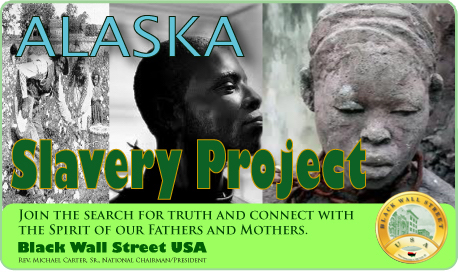
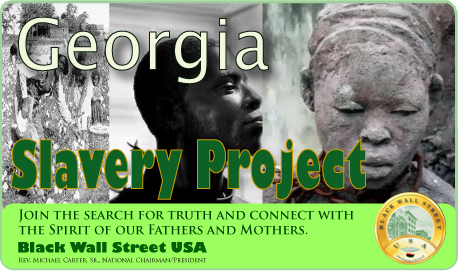

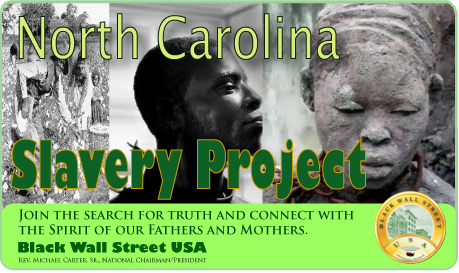
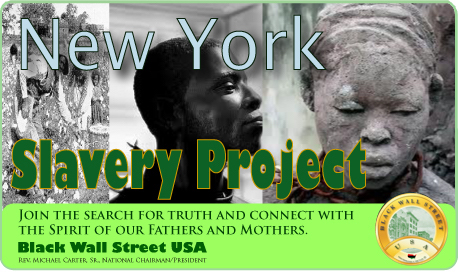

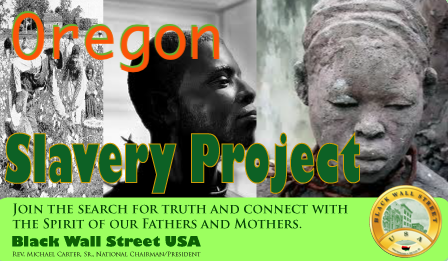

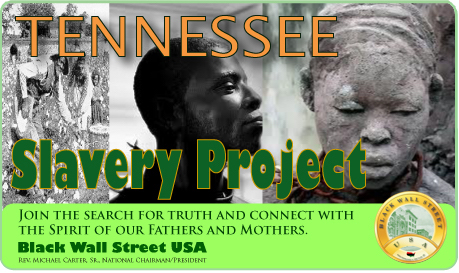
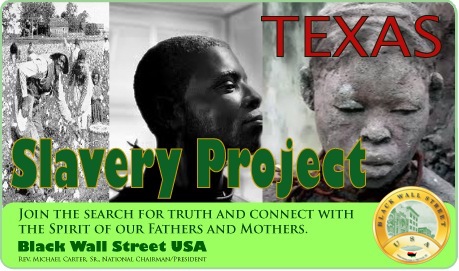
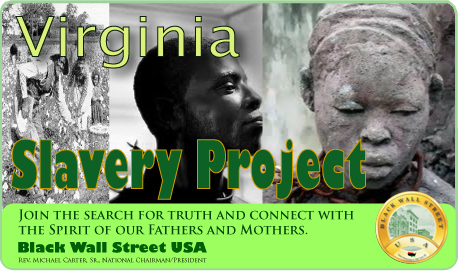


BlackWallStreet.org

Slave Records By State
See: Slave Records By State
Freedmen's Bureau Records
See: Freedmen's Bureau Online
American Slavery Records
See: American Slavery Records
American Slavery: Slave Narratives
See: Slave Narratives
American Slavery: Slave Owners
See: Slave Owners
American Slavery: Slave Records By County
See: Slave Records By County
American Slavery: Underground Railroad
See: American Slavery: Underground Railroad

